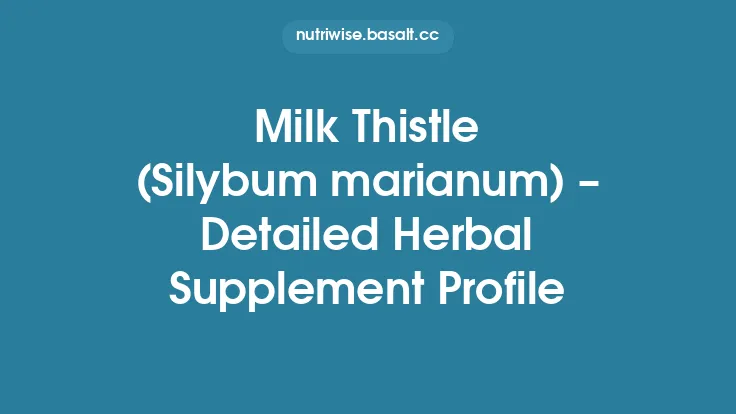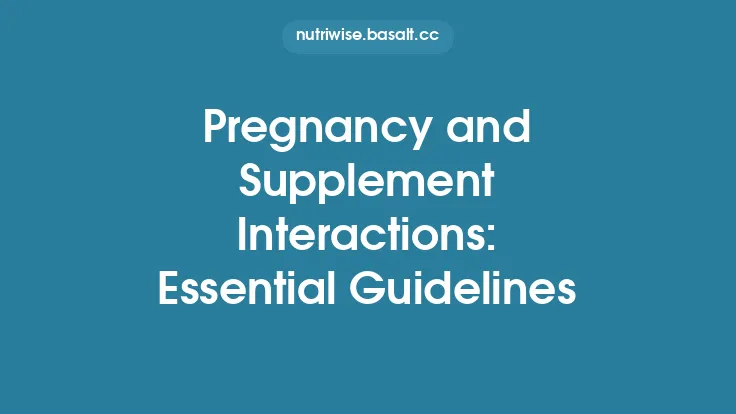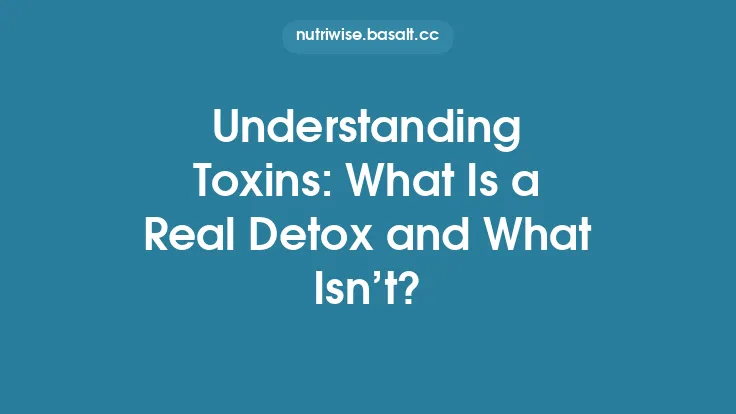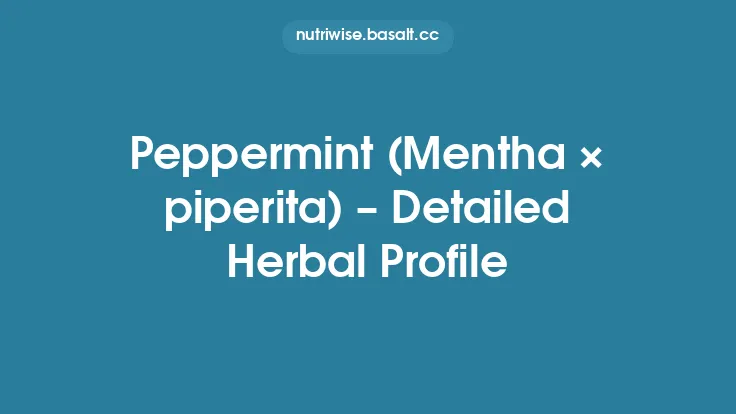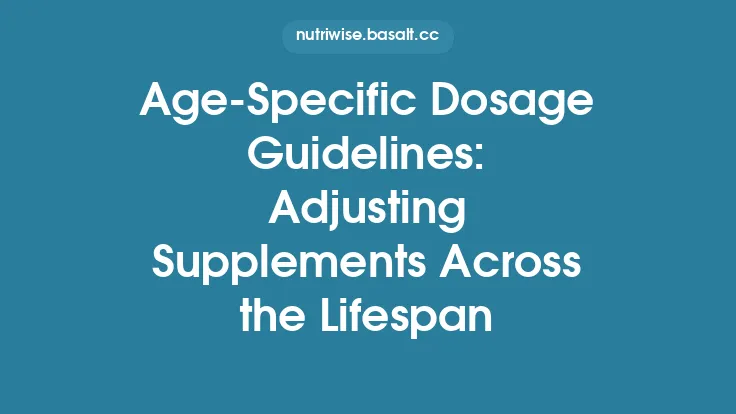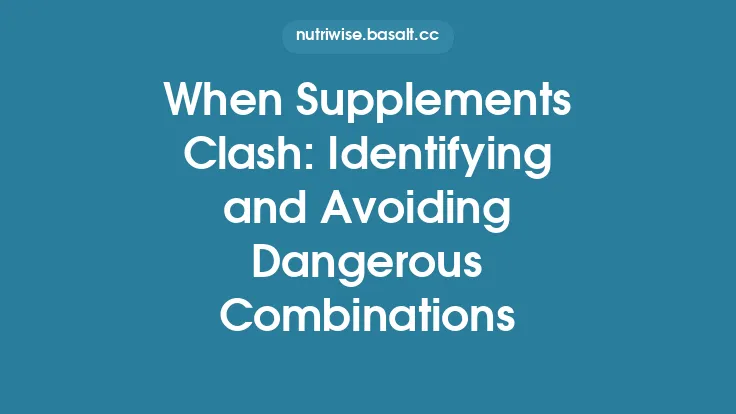St. John’s Wort (Hypericum perforatum) has been a staple of traditional medicine for centuries, prized for its vibrant yellow blossoms and a wide array of therapeutic properties. Modern research has illuminated many of the plant’s bioactive constituents, shedding light on its mechanisms of action and clinical potential. This in‑depth review explores the botanical characteristics, phytochemistry, pharmacology, evidence‑based uses, safety considerations, and practical aspects of incorporating St. John’s Wort into a supplement regimen.
Botanical Profile and Habitat
Taxonomy
- Family: Hypericaceae
- Genus: Hypericum
- Species: *Hypericum perforatum* L.
Morphology
St. John’s Wort is a perennial herbaceous plant that typically reaches 30–100 cm in height. Its stems are erect, angular, and often bear a reddish hue. The leaves are opposite, sessile, and lanceolate, measuring 1–3 cm long. A distinctive feature is the presence of translucent dots (oil glands) that become visible when the leaf is held up to light—hence the species epithet “perforatum.”
The inflorescences are terminal cymes bearing 5–15 bright yellow flowers. Each flower has five petals, numerous stamens grouped into three fascicles, and a superior ovary. The fruit is a small, dry capsule that splits open to release numerous tiny seeds equipped with a pappus for wind dispersal.
Geographic Distribution
Native to Europe, parts of North Africa, and western Asia, *H. perforatum* has naturalized across temperate regions worldwide, including North America, Australia, and New Zealand. It thrives in sunny, well‑drained soils, often colonizing disturbed sites such as roadsides, fields, and forest edges.
Cultivation
Commercial cultivation favors sunny locations with loamy, slightly acidic to neutral soils (pH 6.0–7.5). Propagation is typically achieved via seed sowing in early spring or by vegetative division of mature clumps. Harvesting is timed to coincide with peak flowering (late June to early August in the Northern Hemisphere), when the concentration of active constituents is highest. Post‑harvest, the aerial parts (flowers, leaves, and stems) are air‑dried in the shade to preserve thermolabile compounds.
Phytochemical Constituents
St. John’s Wort’s therapeutic profile stems from a complex mixture of secondary metabolites. The most studied classes include:
| Class | Representative Compounds | Approximate Content (dry weight) |
|---|---|---|
| Naphthodianthrones | Hypericin, pseudohypericin | 0.1–0.3 % |
| Phloroglucinols | Hyperforin, adhyperforin | 0.5–2 % |
| Flavonoids | Quercetin, rutin, hyperoside, isoquercitrin | 1–3 % |
| Phenolic acids | Chlorogenic acid, caffeic acid | 0.5–1 % |
| Tannins | Proanthocyanidins | 1–2 % |
| Essential oils | α‑Pinene, β‑caryophyllene, eucalyptol | <0.5 % |
| Xanthones | Hyperxanthone A | trace amounts |
*Hypericin and hyperforin* are the hallmark markers used for quality control. Hypericin is a red‑pigmented anthraquinone derivative responsible for the plant’s photosensitizing properties, while hyperforin—a polyprenylated acylphloroglucinol—exhibits potent antidepressant activity through modulation of neurotransmitter reuptake.
Mechanisms of Action
Antidepressant Effects
- Monoamine Reuptake Inhibition – Hyperforin acts as a non‑selective inhibitor of the reuptake transporters for serotonin (5‑HT), norepinephrine (NE), dopamine (DA), γ‑aminobutyric acid (GABA), and glutamate. By increasing synaptic concentrations of these neurotransmitters, hyperforin mimics the pharmacodynamics of conventional antidepressants but with a broader spectrum.
- Modulation of the HPA Axis – Preclinical studies suggest that St. John’s Wort extracts attenuate cortisol release under stress, potentially normalizing hypothalamic‑pituitary‑adrenal (HPA) axis dysregulation observed in depressive disorders.
- Neuroprotective Antioxidant Activity – Flavonoids and phenolic acids scavenge reactive oxygen species (ROS) and up‑regulate endogenous antioxidant enzymes (e.g., superoxide dismutase, catalase). This mitigates oxidative stress, a contributor to neuronal dysfunction in mood disorders.
Anti‑Inflammatory and Immunomodulatory Actions
- Cyclooxygenase (COX) Inhibition – Certain flavonoids (e.g., quercetin) inhibit COX‑1 and COX‑2, reducing prostaglandin synthesis.
- Cytokine Regulation – Hyperforin down‑regulates pro‑inflammatory cytokines (IL‑1β, TNF‑α) while promoting anti‑inflammatory cytokines (IL‑10) in macrophage cultures.
Antiviral and Antimicrobial Properties
Hypericin exhibits photodynamic antiviral activity, especially against enveloped viruses such as herpes simplex virus (HSV) and HIV, when activated by specific wavelengths of light. Additionally, essential oil components demonstrate modest antibacterial effects against Gram‑positive organisms.
Wound Healing
Topical preparations benefit from hyperforin’s ability to stimulate keratinocyte proliferation and fibroblast migration, accelerating re‑epithelialization. The anti‑inflammatory milieu further supports tissue repair.
Clinical Evidence
Depression and Mood Disorders
A substantial body of randomized, double‑blind, placebo‑controlled trials (RCTs) has evaluated standardized St. John’s Wort extracts for mild to moderate major depressive disorder (MDD). Meta‑analyses encompassing >30 000 participants report:
- Efficacy comparable to selective serotonin reuptake inhibitors (SSRIs) (e.g., sertraline, fluoxetine) with a pooled risk ratio (RR) for response ≈ 0.85 (95 % CI 0.78–0.92).
- Faster onset of symptom relief in some studies, with significant improvement noted as early as 2 weeks.
- Lower incidence of sexual dysfunction, weight gain, and gastrointestinal side effects relative to conventional antidepressants.
The therapeutic benefit appears dose‑dependent, with standardized extracts delivering 0.3 % hypericin and 2–5 % hyperforin being most effective. Extracts with hyperforin content < 0.5 % show markedly reduced efficacy, underscoring the importance of this constituent.
Anxiety
Limited but promising data suggest adjunctive use of St. John’s Wort may alleviate generalized anxiety symptoms, particularly when comorbid with depressive states. Small RCTs report reductions in Hamilton Anxiety Rating Scale (HAM‑A) scores, though larger trials are needed for definitive conclusions.
Seasonal Affective Disorder (SAD)
A few controlled studies have examined St. John’s Wort for SAD, noting modest improvements in mood and energy levels during winter months. The photodynamic properties of hypericin have prompted investigation into combined light‑therapy protocols, though evidence remains preliminary.
Wound Healing and Dermatological Applications
Topical formulations (creams, gels) containing St. John’s Wort oil have demonstrated accelerated healing of minor burns, abrasions, and postoperative wounds. Randomized trials comparing St. John’s Wort ointment to standard care (e.g., petroleum jelly) report faster epithelialization and reduced scar formation.
Viral Infections
Clinical trials evaluating hypericin‑based photodynamic therapy for recurrent HSV lesions show decreased lesion duration and frequency when combined with controlled light exposure. However, routine oral supplementation for antiviral purposes lacks robust evidence.
Safety, Contraindications, and Drug Interactions
General Tolerability
St. John’s Wort is generally well‑tolerated at recommended doses. Common mild adverse effects include:
- Gastrointestinal upset (nausea, diarrhea)
- Dizziness or headache
- Photosensitivity (particularly with high hypericin content)
These events are typically transient and dose‑related.
Photosensitivity
Hypericin absorbs light in the UV‑A and visible spectrum, potentially leading to phototoxic reactions (e.g., erythema, sunburn‑like lesions) in highly exposed skin. Patients should be advised to use sunscreen and protective clothing when outdoors, especially during peak sunlight hours.
Drug‑Induced Enzyme Modulation
St. John’s Wort is a potent inducer of several cytochrome P450 enzymes (CYP3A4, CYP2C9, CYP2C19) and the drug transporter P‑glycoprotein (ABCB1). This induction can markedly reduce plasma concentrations of co‑administered drugs, leading to therapeutic failure. Notable interactions include:
| Affected Drug Class | Example Medications | Clinical Consequence |
|---|---|---|
| Antidepressants (SSRIs, SNRIs) | Fluoxetine, sertraline | Reduced efficacy, risk of serotonin syndrome if combined with high‑dose St. John’s Wort |
| Anticoagulants | Warfarin, acenocoumarol | Decreased INR, increased clotting risk |
| Immunosuppressants | Cyclosporine, tacrolimus | Lowered drug levels, possible organ rejection |
| Oral Contraceptives | Ethinyl estradiol‑based pills | Decreased contraceptive effectiveness |
| Antiretrovirals | Protease inhibitors, NNRTIs | Subtherapeutic viral suppression |
| Chemotherapeutics | Imatinib, irinotecan | Reduced anticancer efficacy |
| Cardiovascular agents | Digoxin, statins | Altered plasma concentrations, arrhythmia or myopathy risk |
Given the breadth of potential interactions, clinicians should conduct a thorough medication review before recommending St. John’s Wort, especially for patients on narrow‑therapeutic‑index drugs.
Contraindications
- Pregnancy and lactation – Insufficient safety data; avoid use.
- Bipolar disorder – May precipitate manic episodes; contraindicated.
- Severe hepatic or renal impairment – Altered metabolism may increase risk of adverse effects.
Monitoring Recommendations
- Baseline and periodic assessment of liver function tests (LFTs) when used long‑term.
- INR monitoring for patients on warfarin.
- Therapeutic drug monitoring (TDM) for agents with known interactions (e.g., antiretrovirals, immunosuppressants).
Dosage Forms and Standardization
| Form | Typical Daily Dose | Standardization |
|---|---|---|
| Standardized dry extract (capsules/tablets) | 300–900 mg (equivalent to 0.3 % hypericin) | 0.3 % hypericin, 2–5 % hyperforin |
| Liquid tincture (alcoholic) | 20–30 drops (≈ 0.5 mL) three times daily | 0.3 % hypericin |
| Topical oil (for skin) | Apply thin layer 2–3 times daily | 1–2 % hyperforin |
| Tea (dried herb) | 1–2 g steeped in 250 mL water, 2–3 times daily | Not standardized; lower active content |
Standardized extracts are preferred for systemic indications (e.g., depression) to ensure consistent hyperforin and hypericin levels. For topical use, preparations enriched in hyperforin but low in hypericin reduce photosensitivity risk.
Regulatory Status
- United States: Classified as a dietary supplement; manufacturers must adhere to Good Manufacturing Practices (GMP) but are not required to prove efficacy before marketing.
- European Union: Regulated under the Traditional Herbal Medicinal Products Directive (THMPD) for specific indications (e.g., mild depression). Products must demonstrate a favorable risk‑benefit profile and meet quality standards.
- Canada: Listed under Natural Health Products (NHP) with monographs specifying permissible doses and indications.
- Australia: Available as a complementary medicine; listed on the Australian Register of Therapeutic Goods (ARTG) with dosage recommendations.
Regulatory agencies uniformly require labeling that warns about potential drug interactions and photosensitivity.
Quality Assurance and Authentication
Ensuring product integrity involves several analytical techniques:
- High‑Performance Liquid Chromatography (HPLC) – Quantifies hypericin and hyperforin, the primary markers for standardization.
- Thin‑Layer Chromatography (TLC) – Provides a rapid screening for the presence of characteristic pigments.
- DNA Barcoding – Confirms botanical identity, distinguishing *H. perforatum from adulterants such as Hypericum maculatum or Hypericum calycinum*.
- Microbial Testing – Assesses total aerobic count, yeast/mold, and presence of pathogens (e.g., *E. coli, Salmonella*).
- Heavy Metal Analysis – Ensures compliance with limits for lead, cadmium, mercury, and arsenic.
Third‑party certification (e.g., USP, NSF) adds an extra layer of consumer confidence.
Practical Guidance for Consumers
- Start Low, Go Slow: Initiate therapy with the lowest effective dose (e.g., 300 mg standardized extract) and titrate upward based on response and tolerability.
- Timing: Take with food to improve absorption and reduce gastrointestinal upset.
- Avoid Sun Exposure: When using high‑hypericin products, limit direct sunlight for at least 2 hours after ingestion; use sunscreen (SPF 30+) and protective clothing.
- Medication Review: Discuss all current prescriptions, over‑the‑counter drugs, and herbal supplements with a healthcare professional before starting St. John’s Wort.
- Duration of Use: For depressive episodes, a typical course lasts 6–12 weeks. Long‑term use should be periodically reassessed for efficacy and safety.
Emerging Research and Future Directions
- Hyperforin Analogs: Synthetic derivatives aim to retain antidepressant potency while minimizing cytochrome P450 induction. Early preclinical data are encouraging.
- Neurogenesis: Animal studies suggest St. John’s Wort may promote hippocampal neurogenesis via brain‑derived neurotrophic factor (BDNF) up‑regulation, offering a potential mechanism for its mood‑enhancing effects.
- Combination Therapies: Trials investigating synergistic effects of St. John’s Wort with omega‑3 fatty acids, S‑adenosyl‑methionine (SAMe), or low‑dose psychotherapy are underway.
- Personalized Medicine: Pharmacogenomic profiling could predict individual susceptibility to St. John’s Wort‑induced drug interactions, tailoring therapy to genetic variants in CYP enzymes.
Summary
St. John’s Wort (*Hypericum perforatum*) stands out among botanical supplements for its robust evidence base in treating mild to moderate depression, its multifaceted pharmacology, and its historical legacy as a healing herb. The plant’s therapeutic actions are driven primarily by hyperforin’s broad neurotransmitter reuptake inhibition and hypericin’s photodynamic properties, complemented by a rich matrix of flavonoids and phenolic acids that confer antioxidant and anti‑inflammatory benefits.
While generally safe, the herb’s potent induction of drug‑metabolizing enzymes mandates careful consideration of concomitant medications, and its photosensitizing potential requires prudent sun‑avoidance strategies. Standardized extracts—particularly those delivering ≥ 2 % hyperforin and 0.3 % hypericin—provide the most reliable clinical outcomes.
For consumers and practitioners alike, a balanced approach that emphasizes quality‑controlled products, thorough medication reconciliation, and individualized dosing can harness the benefits of St. John’s Wort while mitigating risks. Ongoing research promises to refine our understanding of its mechanisms, expand its therapeutic horizons, and integrate it more seamlessly into evidence‑based integrative health practices.
